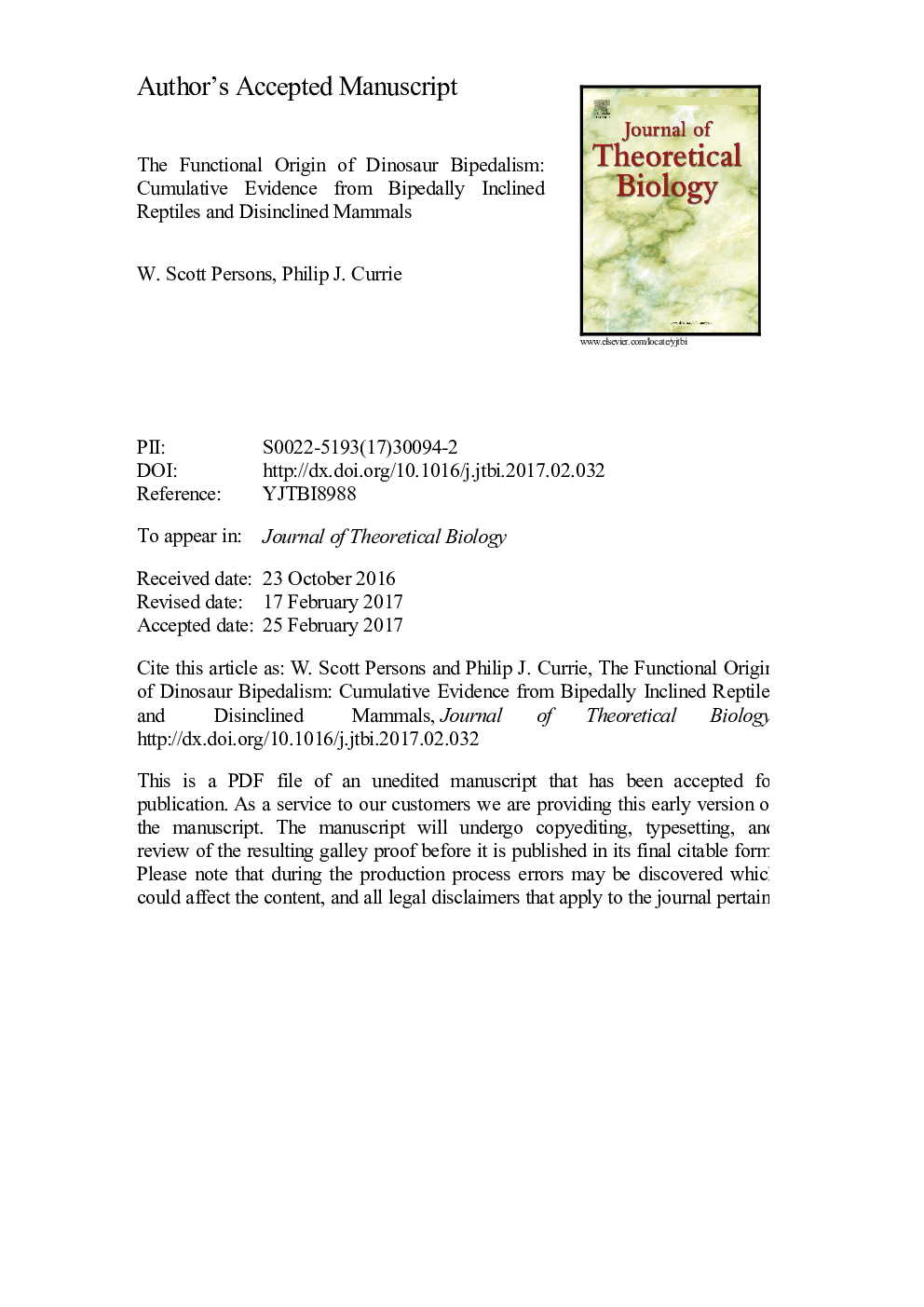| کد مقاله | کد نشریه | سال انتشار | مقاله انگلیسی | نسخه تمام متن |
|---|---|---|---|---|
| 5760037 | 1623790 | 2017 | 28 صفحه PDF | دانلود رایگان |
عنوان انگلیسی مقاله ISI
The functional origin of dinosaur bipedalism: Cumulative evidence from bipedally inclined reptiles and disinclined mammals
ترجمه فارسی عنوان
منشاء کاربردی دوپدالیزم دایناسور: شواهد تجمعی از خزندگان دوقطبی و پستانداران ناخوشایند
دانلود مقاله + سفارش ترجمه
دانلود مقاله ISI انگلیسی
رایگان برای ایرانیان
کلمات کلیدی
موضوعات مرتبط
علوم زیستی و بیوفناوری
علوم کشاورزی و بیولوژیک
علوم کشاورزی و بیولوژیک (عمومی)
چکیده انگلیسی
Bipedalism is a trait basal to, and widespread among, dinosaurs. It has been previously argued that bipedalism arose in the ancestors of dinosaurs for the function of freeing the forelimbs to serve as predatory weapons. However, this argument does not explain why bipedalism was retained among numerous herbivorous groups of dinosaurs. We argue that bipedalism arose in the dinosaur line for the purpose of enhanced cursoriality. Modern facultatively bipedal lizards offer an analog for the first stages in the evolution of dinosaurian bipedalism. Many extant lizards assume a bipedal stance while attempting to flee predators at maximum speed. Bipedalism, when combined with a caudofemoralis musculature, has cursorial advantages because the caudofemoralis provides a greater source of propulsion to the hindlimbs than is generally available to the forelimbs. That cursorial advantage explains the relative abundance of cursorial facultative bipeds and obligate bipeds among fossil diapsids and the relative scarcity of either among mammals. Having lost their caudofemoralis in the Permian, perhaps in the context of adapting to a fossorial lifestyle, the mammalian line has been disinclined towards bipedalism, but, having never lost the caudofemoralis of their ancestors, cursorial avemetatarsalians (bird-line archosaurs) were naturally inclined towards bipedalism.
ناشر
Database: Elsevier - ScienceDirect (ساینس دایرکت)
Journal: Journal of Theoretical Biology - Volume 420, 7 May 2017, Pages 1-7
Journal: Journal of Theoretical Biology - Volume 420, 7 May 2017, Pages 1-7
نویسندگان
W. Scott Persons, Philip J. Currie,
